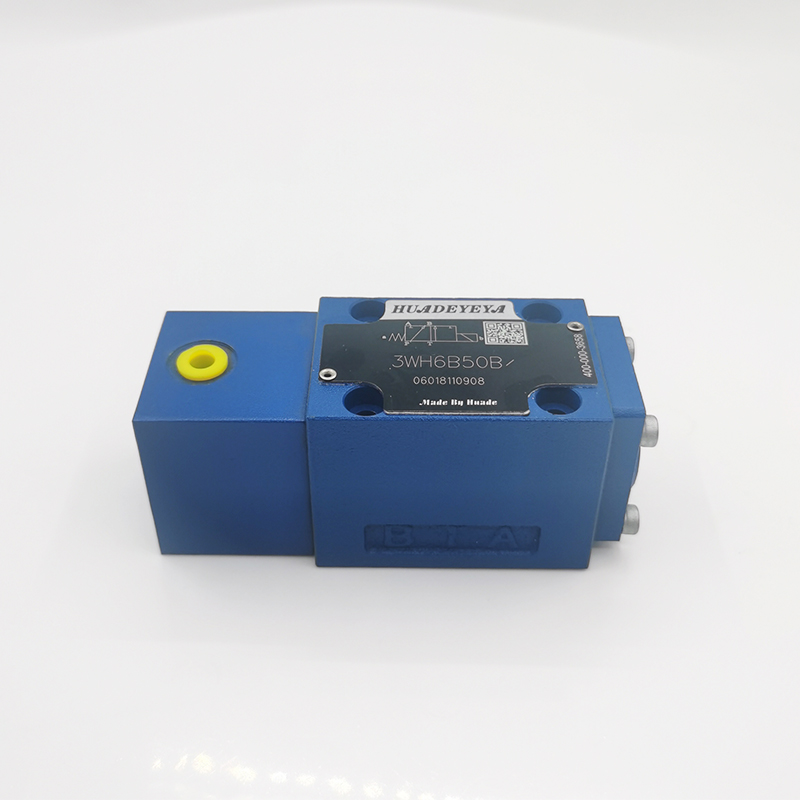What is hydraulic directional control valve?
Hydraulic systems are widely used in various industries, from manufacturing and construction to agriculture and automotive. The hydraulic directional control valve is a key component of these systems, regulating the flow and direction of hydraulic fluid. In this article, we will explore the functionality, types, and applications of hydraulic directional control valves, shedding light on their crucial role in hydraulic system operation.
Function and Operation: A hydraulic directional control valve is responsible for controlling the flow direction of hydraulic fluid in a system. It determines whether the fluid flows to one or multiple hydraulic actuators, such as cylinders or motors, and in which direction. By opening or closing specific pathways within the valve, it directs the fluid flow and enables precise control over the hydraulic system's operation.
Types of Hydraulic Directional Control Valves: There are several types of hydraulic directional control valves, each designed for specific applications and requirements. The most common types include:
a. Spool Valves: Spool valves are the most widely used type of directional control valves. They consist of a cylindrical spool housed within a valve body. The spool has channels or grooves that align with different ports, allowing or blocking fluid flow. By moving the spool, the flow direction can be changed, enabling precise control over hydraulic actuators.

b. Poppet Valves: Poppet valves utilize spring-loaded poppets to control fluid flow. Poppets are pushed against or pulled away from their seats, allowing or blocking fluid passage. Poppet valves are known for their high flow capacity and suitability for applications requiring quick response times.
c. Rotary Valves: Rotary valves use a rotating element, such as a rotor or disc, to control fluid flow. By rotating the element, fluid passages are aligned or blocked, determining the flow direction. Rotary valves are commonly used in applications where compact size and low pressure drop are crucial.
Applications of Hydraulic Directional Control Valves: Hydraulic directional control valves find applications in a wide range of industries and systems, including:
a. Mobile Equipment: Hydraulic control valves are essential in mobile equipment such as excavators, loaders, and agricultural machinery. They regulate the movement of hydraulic cylinders, controlling the boom, bucket, or other attachments.
b. Industrial Machinery: In industrial settings, hydraulic directional control valves are used in machinery such as presses, machine tools, and material handling equipment. They enable precise control over hydraulic cylinders or motors for various operations.
c. Construction and Mining: Hydraulic directional control valves play a vital role in construction and mining equipment, controlling functions such as lifting, digging, and steering. They ensure efficient and safe operation of hydraulic systems in demanding environments.
d. Automation Systems: Hydraulic directional control valves are used in automated systems where precise control over hydraulic actuators is necessary. These applications include robotics, assembly lines, and production machinery.
Key Considerations: When selecting a hydraulic directional control valve, several factors should be considered, including the required flow capacity, pressure rating, actuation method (manual, solenoid, or pilot-operated), and compatibility with the hydraulic fluid and system components. It is crucial to choose a valve that meets the specific requirements of the application and provides reliable and efficient operation.
Conclusion: Hydraulic directional control valves are essential components in hydraulic systems, enabling precise control over fluid flow and direction. With different types available, such as spool valves, poppet valves, and rotary valves, these valves cater to a wide range of applications across various industries. By understanding the function and types of hydraulic directional control valves, manufacturers and system designers can select the appropriate valve for their specific hydraulic system requirements, ensuring efficient and reliable operation. The reliability and performance of hydraulic systems depend on the proper selection and utilization of hydraulic directional control valves, making them a vital component in hydraulic machinery and equipment.
280
0
0

Comments
All Comments (0)